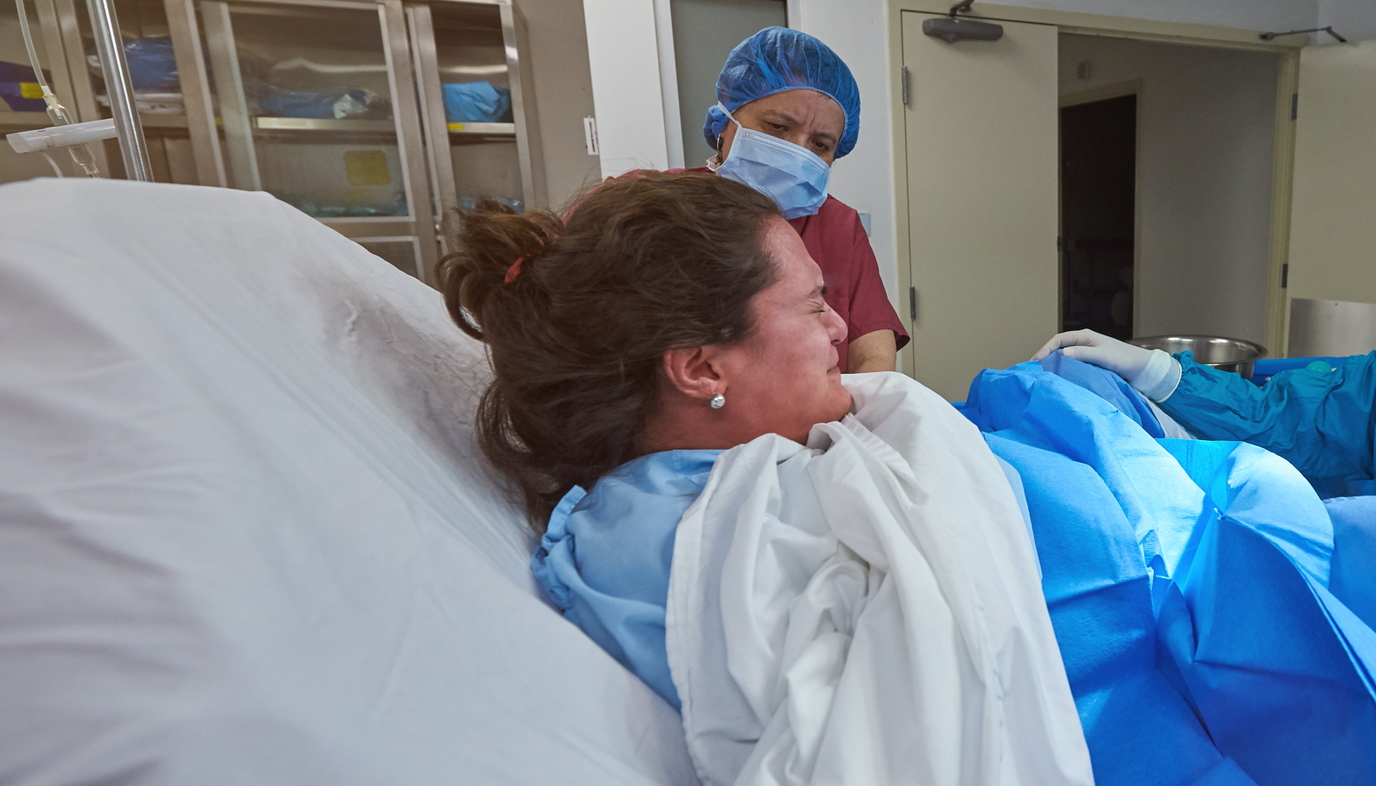
Labor and delivery of a precious new baby is an arduous process. There are many different tips available to help make the potential hours of labor and the birth process more tolerable and comfortable for the mother and baby. While every option may not work for every mother, an effective personal plan can be developed to include several tips that help ease this necessary and momentous journey.
Breathing Methods
Slow, focused breathing calms the mother. A deep cleansing breath followed by slow, steady, deep breaths helps to take the mother’s focus off of the discomfort of labor. Breathing techniques quicken as the rhythm of the labor progresses.
Meditation
Yoga helps to calm the mind but also strengthens the body’s core in preparation for childbirth. Expectant mothers should be careful to take only "prenatal yoga" classes to help ensure they only practice poses that are considered safe during pregnancy. The butterfly and cat stretch are two poses that are generally considered safe, and they can be helpful positions to prepare for labor.
Butterfly: Begin by sitting and bring the soles of the feet together. Pull them in, close to the pelvis. Sit tall, close eyes and meditate for 10 minutes. This exercise relaxes the hips.
Cat stretch: Begin on all fours with the spine and neck aligned. Breathe in and lower the abdomen towards the floor while looking upward towards the ceiling. When exhaling, round the back towards the ceiling while lowering the head to look down at the belly button. The lower back benefits by stretching and strengthening.
Creative Visualization
Using creative visualization during the labor process can do much to relax the mother and put her in the right frame of mind. Positive images like ocean waves or a warm beach can help to ease stress or anxiety. The ebb and flow of the tide are likened to the rhythmic contractions of labor.
Nutrition and Diet
Beginning a pregnancy at a healthy weight will help to prepare the body for labor and delivery. Eating a well-balanced diet throughout the pregnancy will help maintain good health for the mother and baby. A few tips include:
- Eating enough good fat helps to keep body tissues strong and pliable; flaxseed oil and avocados are good sources.
- Drink plenty of water.
- Limit foods with additives.
- Choose whole grain bread and rice, not white.
- Avoid caffeine.
Exercise
Research shows that Kegel or pelvic floor exercises done during the last months of pregnancy help to ease labor pain. Kegels especially helped to shorten the duration of the pushing stage of labor.
Kegels are done by repeatedly contracting the levator ani muscle deep in the abdomen. The exercise is done by contracting the muscle, which starts and stops the flow of urine. Do 25-45 Kegels three times a day for the greatest benefit.
Squats also help to strengthen the pelvic floor and open up the pelvis. Pelvic tilts strengthen and stretch the abdominal muscles and the lower back.
Music
Soothing music in the first stages of labor will help delay the need for pain medication. As labor progresses, a more upbeat music selection can help distract the mother from her pain.
A Labor Doula
A doula is a childbirth specialist who provides emotional and physical support to the mother during all stages of pregnancy. A labor doula is present in the birth room to assist and support the mother through every stage of labor and birth. Statistics show a 25 percent decrease in the length of labor when a doula is present. The use of epidurals is decreased by 60 percent when a doula is engaged in the birthing process.
Doulas often use hypnotherapy and massage therapy to relax the mother. Hypnotherapy is similar to creative visualization, which relieves tension. Massage therapy increases oxytocin production, which increases uterine contractions, encourages a feeling of well-being, and elevates the pain threshold.
Birthing Ball
Sitting on a slightly deflated birthing ball, like the ones used at the gym or in physical therapy, can help ease labor pain. Rocking back and forth on the birthing ball can also help the baby travel further into the pelvis during labor.
Sleep Well
It is important to enter labor in a well-rested state to increase the mother’s stamina. During the last weeks of pregnancy, take naps. It is best to sleep on the left side to enhance circulation for the baby.
The Plan
Every suggested measure is not intended for every woman who is in labor. A safe and well-considered birth plan that includes a combination of tips and tricks to make labor easier can be achieved through consultation with a qualified physician and a labor doula.


